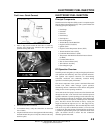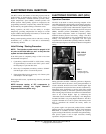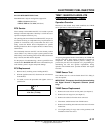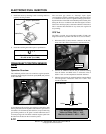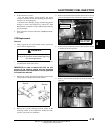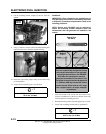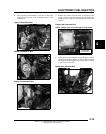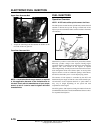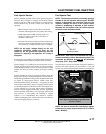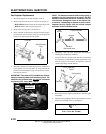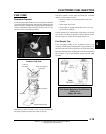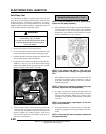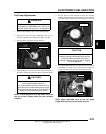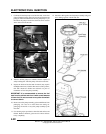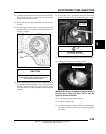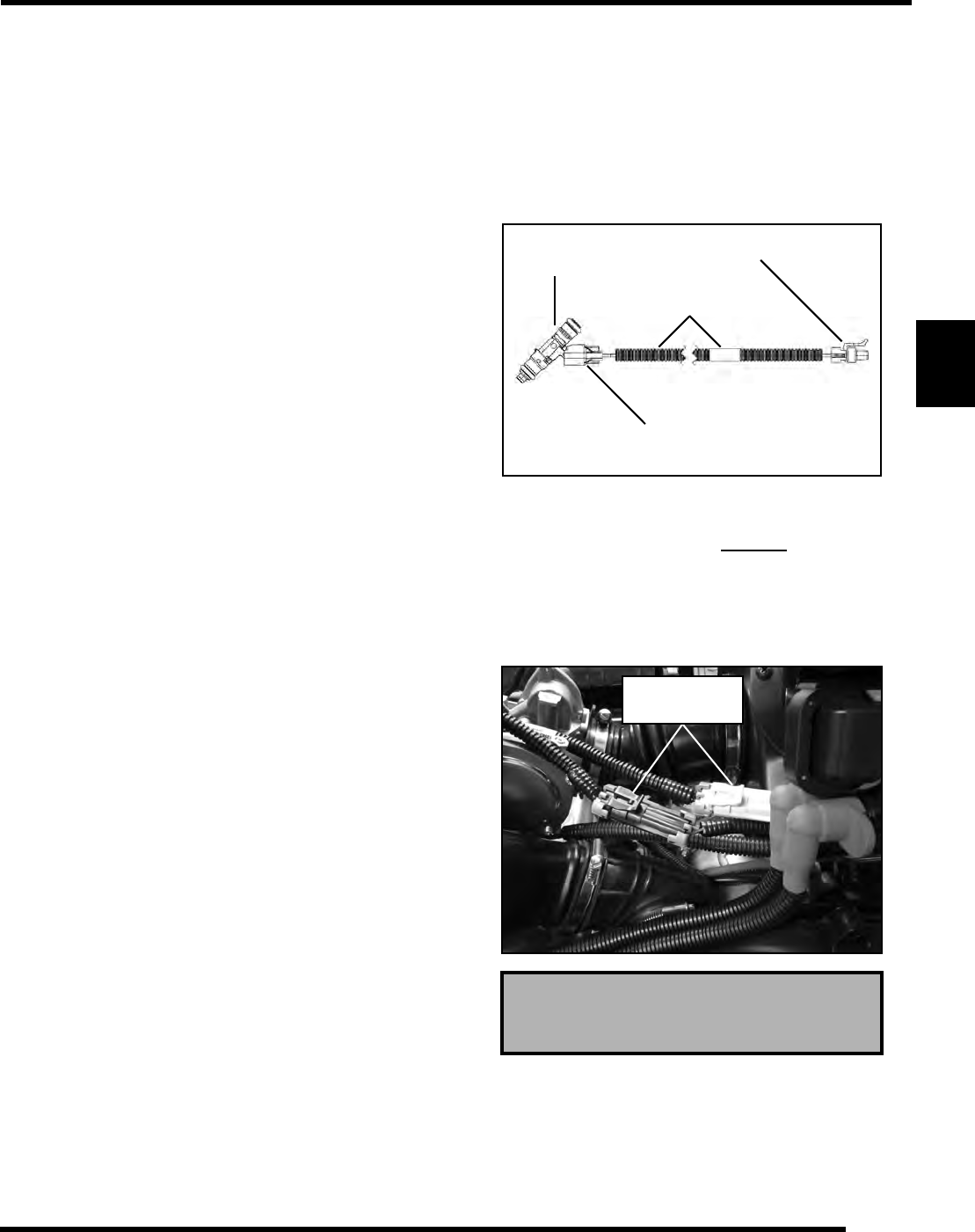
4.17
ELECTRONIC FUEL INJECTION
4
9923142 - 2011 RANGER RZR / RZR S / RZR 4 Service Manual
© Copyright 2010 Polaris Sales Inc.
Fuel Injector Service
Injector problems typically fall into three general categories-
electrical, dirty / clogged, or leakage. An electrical problem
usually causes one or both of the injectors to stop functioning.
Several methods may be used to check if the injectors are
operating.
• With the engine running at idle, feel for operational
vibration, indicating that they are opening and closing.
• When temperatures prohibit touching, listen for a
buzzing or clicking sound with a screwdriver or
mechanic's stethoscope.
• Disconnect the electrical connector from an injector and
listen for a change in idle performance (only running on
one cylinder) or a change in injector noise or vibration.
NOTE: Do not apply voltage directly to the fuel
injector(s). Excessive voltage will burn out the
injector(s). Do not ground the injector(s) with the
ignition on. lnjector(s) will open/turn on if relay is
energized.
If an injector is not operating, it can indicate either a bad injector,
or a wiring/electrical connection problem. Check as follows:
Injector leakage is very unlikely, but in rare instances it can be
internal (past the tip of the valve needle), or external (weeping
around the injector body). The loss of system pressure from the
leakage can cause hot restart problems and longer cranking
times.
Injector problems due to dirt or clogging are unlikely due to the
design of the injectors, the high fuel pressure, the use of filters
and the detergent additives in the gasoline. Symptoms that could
be caused by dirty/clogged injectors include rough idle,
hesitation/stumble during acceleration, or triggering of fault
codes related to fuel delivery. Injector clogging is usually caused
by a buildup of deposits on the director plate, restricting the flow
of fuel, resulting in a poor spray pattern. Some contributing
factors to injector clogging include; dirty air filters, higher than
normal operating temperatures, short operating intervals and
dirty, incorrect, or poor quality fuel. Cleaning of clogged
injectors is not recommended; they should be replaced.
Additives and higher grades of fuel can be used as a preventative
measure if clogging has been a problem.
Fuel Injector Test
NOTE: The harness connector and locking spring is
bonded to the fuel injectors with an epoxy. DO NOT
attempt to disconnect the connector from the fuel
injectors. Damage will occur to the injector and/or
harness if attempting to separate at that location.
Separate the fuel injector from the vehicle harness
as shown in the illustration below.
IMPORTANT: Take note of PTO and MAG fuel injector
harness connectors before disconnecting them. The
harnesses are different and can not
be connected
incorrectly (PTO - Gray; MAG - Black).
The fuel injectors are non-serviceable. If diagnosis indicates a
problem with either injector, test the resistance of the fuel
injector(s) by measuring between the two harness pin terminals:
NOTE: Be sure to connect like colored fuel injector
connectors for proper engine function (PTO = GRAY,
MAG = BLACK).
Fuel Injector Resistance Specification:
11.4 - 12.6
Disconnect Here
DO NOT
Disconnect Here
Fuel
Injector
Harness
Disconnect
and test here



